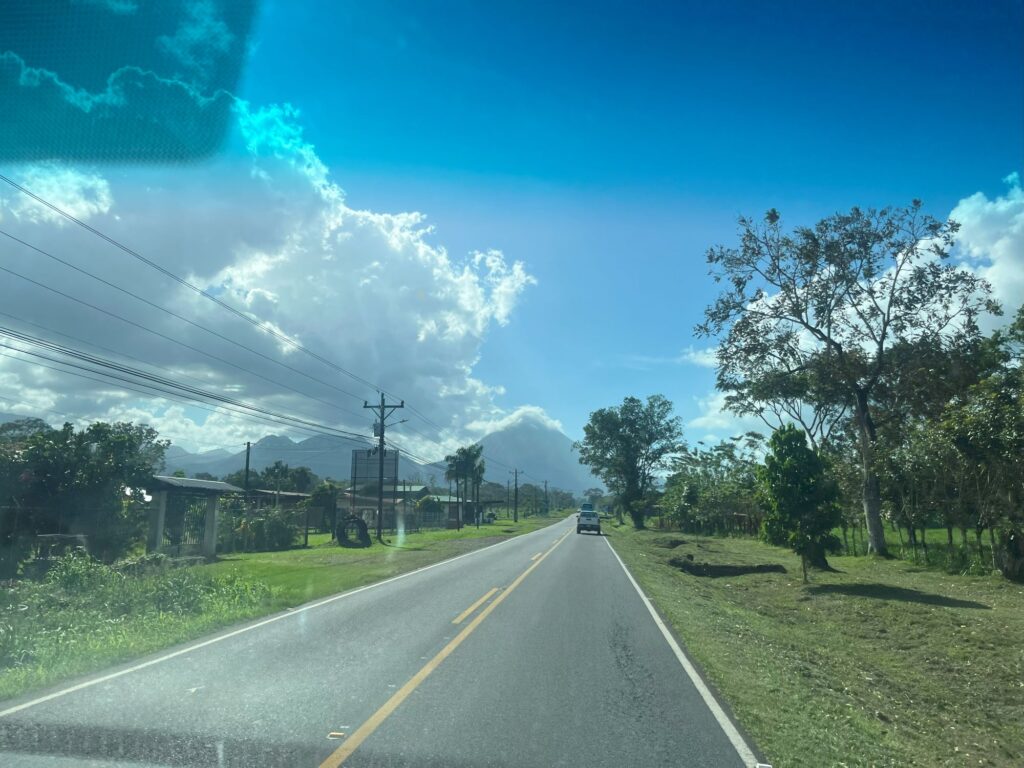A recent trip to Central America landed me in a San Salvador emergency room, a sobering experience that prompted me to delve deeper into preventing motion sickness, a lifelong challenge. Spending a night in a foreign hospital, unsure of recovery, isn’t an experience I’d wish upon anyone.
Since childhood, I’ve battled severe motion sickness. I vividly recall one of the worst episodes during our family’s move to the United States when I was just 10. After landing in Hawaii, a layover before heading to Mesquite, Texas, I experienced relentless nausea, a sign of things to come. While it improved through my teens and thirties, my motion sickness has worsened in my fifties. I can no longer enjoy amusement park rides or even glance at my phone during travel.
So, during my trip to El Salvador, my daughter and I decided to take a hiking tour to Volcan de Santa Ana. Unfortunately, sitting in the back seat of the shuttle during rush hour traffic triggered severe motion sickness. Desperate for relief, my friends took me to the emergency room.
Anyone familiar with motion sickness knows it doesn’t fade away quietly, especially for me. It lingered for days, exacerbated by constant travel during our trip. Determined to avoid a repeat, I returned home with the goal of finding ways to prevent such incidents and spare myself from ending up in another foreign emergency room.
Understanding the Causes
Motion sickness occurs when there is a disconnect between what your eyes see and what your inner ears (vestibular system) sense. This sensory mismatch confuses the brain, leading to symptoms like nausea, dizziness, sweating, and vomiting.
Here’s how it works: Your inner ears, which are responsible for balance, detect motion through fluid-filled semicircular canals. When you’re in a moving vehicle or on a boat, your inner ears sense the motion. However, if you’re reading a book or looking at your phone, your eyes perceive a stationary environment. This disparity between what your eyes see (stationary) and what your inner ears feel (motion) creates confusion in the brain, resulting in motion sickness.
Additionally, other factors can contribute to motion sickness, such as individual susceptibility, anxiety, and the type of motion experienced (e.g., car, boat, airplane). Understanding these factors can help individuals better manage and prevent motion sickness during travel.
Tips for Preventing Motion Sickness
Here are some effective strategies to prevent motion sickness:
1. Choose the Right Seat

- Front seat in a car: Choose this seat to reduce the sensation of movement and minimize the risk of motion sickness.
- Seats over the wings in an airplane: Opt for these seats as they experience less turbulence, providing a more stable ride and decreasing the likelihood of feeling nauseous.
- Center of the boat: Sitting toward the center helps minimize the rocking motion of the boat, making the journey more comfortable.
2. Stay Hydrated

Staying hydrated is essential for preventing motion sickness symptoms. Dehydration can worsen feelings of nausea and discomfort during travel. Drink plenty of water before and during your journey to maintain hydration levels and reduce the risk of severe symptoms.
3. Avoid Heavy Meals

To prevent worsening nausea during travel, steer clear of heavy or greasy foods. These can be hard to digest and may heighten discomfort on the journey. Opt for light, easily digestible options such as smoothies or soups to keep your stomach settled and minimize the risk of severe nausea.
4. Ginger

Ginger is known for its nausea-reducing properties. Chewing on fresh ginger is the simplest and most cost-effective method. Alternatively, you can try ginger supplements, ginger tea, or ginger candies in preventing motion sickness symptoms. Adding ginger to your routine can help provide relief and enhance your travel experience.
5. Focus on the Horizon

While traveling, focus your eyes on a stable object in the distance, like the horizon. This simple practice can help ease nausea by reorienting your senses. I found applying this technique to be particularly helpful in preventing additional motion sickness during my travels in Central America.
6. Fresh Air

If feasible, open a window or go outside for fresh air while traveling. Stuffy or stagnant environments can worsen motion sickness symptoms. Getting fresh air can help alleviate discomfort and make your journey more tolerable.
7. Acupressure Bands

Certain individuals experience relief from motion sickness by using acupressure bands on their wrists. These bands apply pressure to specific points thought to relieve nausea. It’s a simple and non-invasive method that some find helpful for preventing motion sickness symptoms.
8. Medication

I typically avoid medications, so I don’t usually take any. However, over-the-counter options like antihistamines or scopolamine patches have known to be effective in preventing motion sickness. It’s important to consult a healthcare professional for advice on the right medication and how to use it properly.
9. Sleeping or Closing Your Eyes

For certain individuals, including myself, finding relief from motion sickness can be as simple as sleeping or closing our eyes during travel. This strategy works by lessening sensory input and reducing our perception of motion, easing the discomfort associated with motion sickness.
In summary, preventing motion sickness involves being mindful of various strategies. Personally, I’ve become more conscious than ever about managing it during my travels. While there are multiple approaches, I’ve found that closing my eyes or sleeping is the most effective for me. Additionally, taking control by driving, especially on winding roads, has proven beneficial in avoiding motion sickness and ensuring a more enjoyable travel experience. It’s a matter of finding what works best for each individual, and these simple adjustments have made a significant difference in enhancing my journeys.














